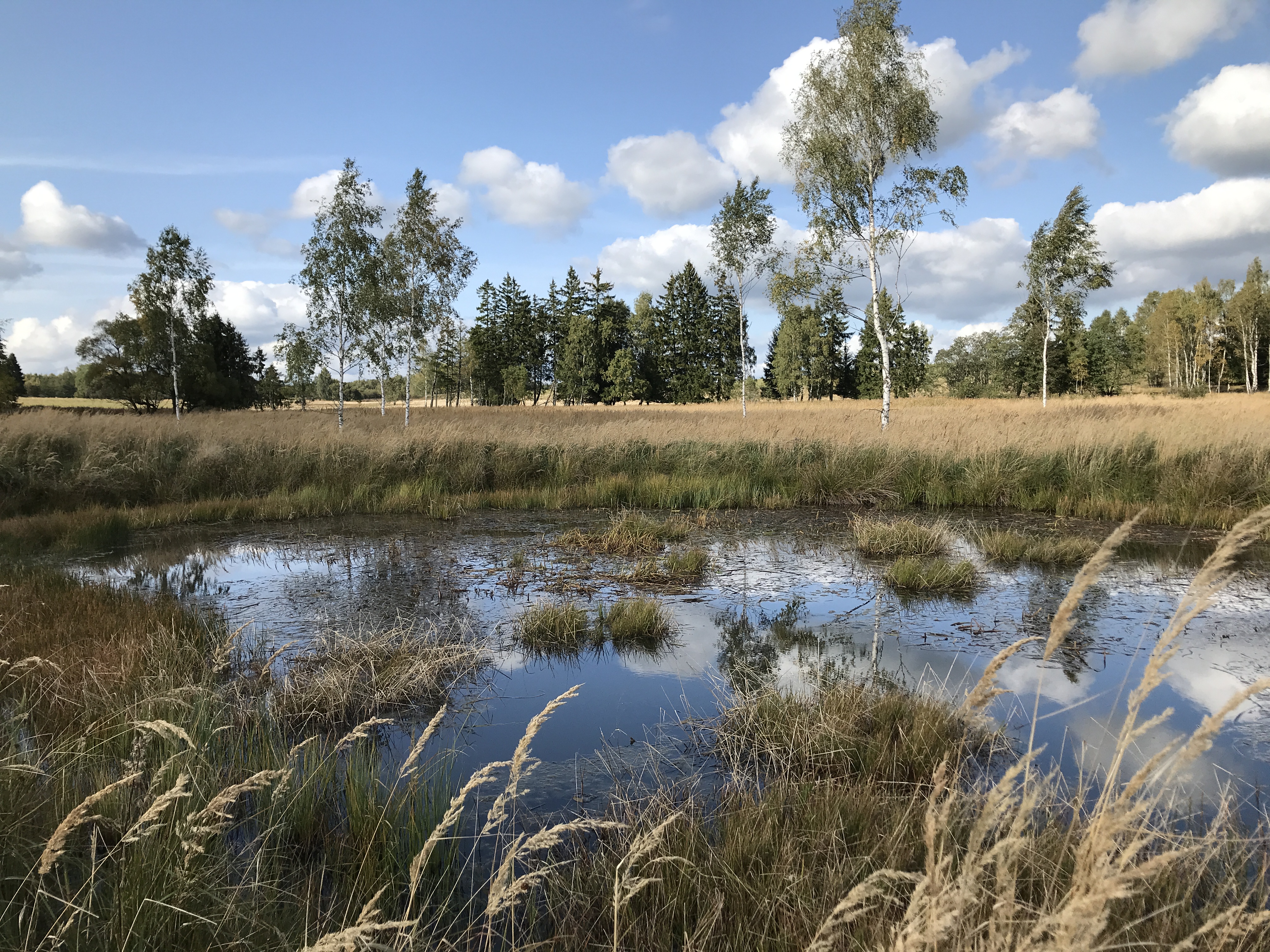Benefits of wetlands
Wetlands, often overlooked, hold immense value for ecosystems and societies. They provide wide spectrum of benefits. Beside they are home to 40 percent of the world’s species, they protect us from flooding, provide food and clean water, and also play a crucial role in combating climate change. Following paragraphs described just several selected benefits.
Wetlands improve water quality
Wetlands purify and store the water. They intercept runoff from surfaces prior to reaching open water and remove pollutants through physical, chemical, and biological processes. In this process wetlands plant, roots and microorganisms on plant stems and in the soil absorb excess nutrients in the water from fertilizers, manure, leaking septic tanks and municipal sewage. Therefore, wetlands provide a cost-effective alternative to traditional wastewater treatment option.
A wetland’s natural filtration process can remove excess nutrients before water leaves a wetland, making it healthier for drinking, cleaner for swimming and supporting plants and animals

Wetlands host the biodiversity
Wetlands ecosystems are cradles of biological diversity, providing the water and primary productivity upon which countless species of plants and animals depend for survival. They support high concentrations of birds, mammals, reptiles, amphibians, fish and invertebrate species.
Some researches saying that in terms of the number and variety of species they are as rich as rainforests. Wetlands host more species per square kilometre than land or oceans.
Wetlands control erosion
Wetlands plants are important because they can absorb much of the energy of the surface waters and bind soil and deposited sediments in their dense root systems. That way wetlands act as a natural soil erosion control method.
Particularly riparian wetlands, salt marshes, and marshes located at the margin of lakes and rivers protect shorelines and streambanks from erosion. The roots of wetland plants also significantly reduce velocity of stream or river currents.
Wetlands mitigate floods
Wetlands can play an important role in reducing the frequency and intensity of floods. They act as natural buffers, soaking up and storing a significant amount of floodwater.
When water enters a wetland, it slows down and moves around wetland plants. Speed of the water slow down and is released slowly from the wetland soils. Much of the sediment drops out and settles to the wetland floor. By holding back some of the flood waters and slowing the rate that water re-enters the stream channel. Wetlands that way reduce the severity of downstream flooding erosion.
Wetlands improve habitats
Wetlands improve habitats for many waters depended species. Wetlands also provide habitat for threatened and endangered species. Many of them can live only in wetlands. Wetlands support continuity of food web. Wetlands process big number of decaying plants and that is important process of food web.
Vegetation management is the most practical way to enhance wetland habitats. That process creates or enhances vegetative layers, both horizontally and vertically. Numerous heights and layers of vegetation appeal to a wider variety of wildlife.

Wetlands supply water
Wetlands are like natural sponge. Absorb water in a period of rain and snow melt and then slowly releases it. Wetlands, positively impact water supply, serving as reservoirs for the watershed and gradually releasing retained water into surface water and ground water.
Some freshwater wetlands are located at points where surface water enters an underground aquifer, thereby recharging groundwater supplies. Wetlands are often points where the groundwater discharge to the surface of the land.
Wetlands provide recreation
Wetlands provide endless opportunities for popular recreational activities such as hiking, fishing, bird watching, nature photography, kayaking and canoeing and also hunting. Almost everyone likes being on or near the water or wetland. These areas are full of fascinating lifeforms linked to the water. Wetlands offer them especially enjoyable treasures.
With their rich array of plants and animals and mixture of habitat types, wetlands are perfect places to connect with nature throughout the year. People love to visit wetlands. There are territories where wetlands tourism could generate a very significant income to the budget of the local municipality and region.
Wetlands support partnerships
Scaling up the safeguarding and restoration of damage wetlands requires action from all parts of society. This means collaboration with many and diverse partners at all scales, from knowledge institutions to the private sector.
Wetlands protection create a framework to allow communities, individuals, businesses, organizations, and others to build partnerships. These partnerships focus protection activities and provide various entities access to data and resources that otherwise would not be available.
Growing pressure on wetlands coming from urbanisation, agriculture and industry, it is more and more obvious. There is a need to transform all involved sectors to focus for wetlands conservation and restoration. Only that way an innovative approach to wetland conservation and restoration can be invented and implemented.
Wetlands are field classrooms
Wetlands protection activities provide meaningful opportunities to educate the public regarding wetlands science, wetlands protection, and the value of water resources. Visit of wetlands provide enormous motivation for people to learn about this fascinating ecosystem.
Any time of year is providing specific wetland experience. However, the spring and fall months are the most attractive, when wetlands can be used as a field classroom. It is a time when the wetlands are alive with the sights and sounds of migrating waterfowl and the other wildlife species that share these wild places.

Wetlands encourage aesthetic appeal
Wetlands have an attractive aesthetic value and are often incorporated as features within landscape design. A lot of people regularly visiting the wetlands because they enjoy that kind of habitat and landscape in any part of the year.
Many wetlands are visually rich environments because of their ecological diversity. Large group of people go to the wetlands to observe wildlife. Exploring attractive wetland habitats, homeland for the wildlife provide their experience additional value. Wetlands with attractive wildlife habitat are perceived as more aesthetically pleasing.
In areas where most of the lands have been developed, the remaining wetlands are increasingly valuable. People finally learn what they have already lost. In a heavily developed areas, the remaining wetlands are valued as aesthetic element open space.
Summary
Benefits offered by wetlands are very diverse. However, it is only in the last decades when people start to understand that the wetlands are one of the most valuable assets they still have. This asset is even higher when people recognize how close to the big cities these wetlands can be found.








